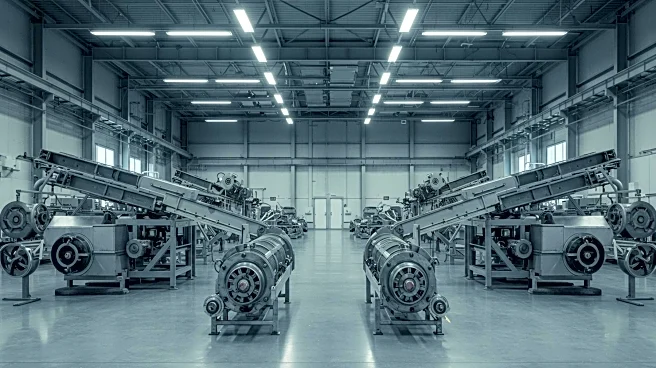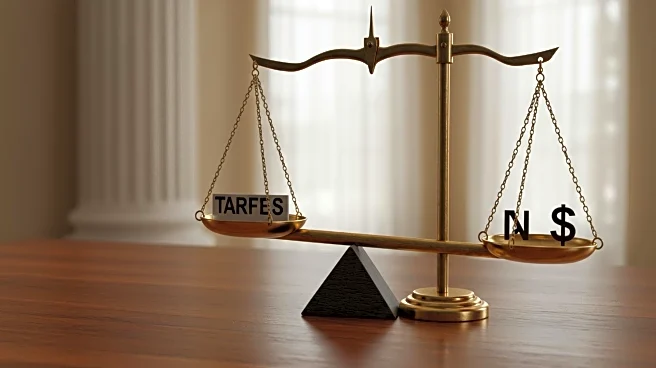What's Happening?
Industrial production in the United States experienced a slight decline of 0.1% in July, as reported by the Federal Reserve. This follows a 0.3% increase in June. The manufacturing output remained unchanged, while the mining sector saw a decrease of 0.4% and utilities fell by 0.2%. Despite the monthly decline, the total industrial production index was 1.4% higher than the previous year, standing at 104.0% of its 2017 average. Capacity utilization also decreased to 77.5%, which is 2.1 percentage points below its long-term average.
Why It's Important?
The decline in industrial production is significant as it reflects the current state of the U.S. economy, particularly in the manufacturing, mining, and utilities sectors. A decrease in capacity utilization suggests that industries are not operating at their full potential, which could impact economic growth and employment. This trend may influence policy decisions by economic stakeholders and could lead to adjustments in interest rates or other economic measures to stimulate production and utilization.
What's Next?
Economic analysts and policymakers will likely monitor these trends closely to determine if further interventions are necessary to boost industrial production. The Federal Reserve may consider adjusting monetary policies to encourage growth in these sectors. Additionally, businesses within the affected industries might explore strategies to enhance productivity and efficiency to counteract the decline.












